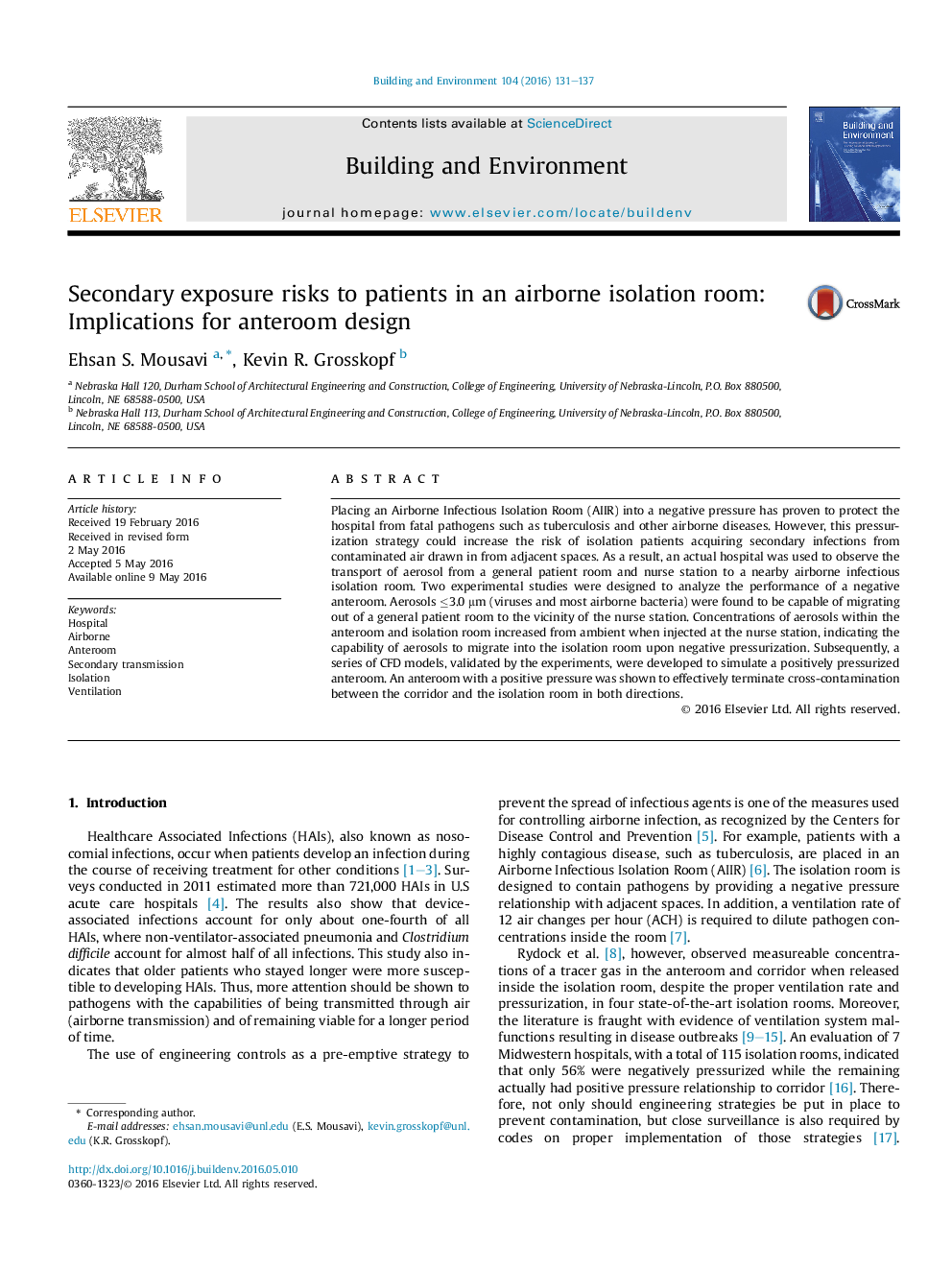| کد مقاله | کد نشریه | سال انتشار | مقاله انگلیسی | نسخه تمام متن |
|---|---|---|---|---|
| 6699123 | 502518 | 2016 | 7 صفحه PDF | دانلود رایگان |
عنوان انگلیسی مقاله ISI
Secondary exposure risks to patients in an airborne isolation room: Implications for anteroom design
ترجمه فارسی عنوان
قرار گرفتن در معرض خطر دوم برای بیماران در یک اتاق انزوا در هوا: پیامدهای طراحی پیشانی
دانلود مقاله + سفارش ترجمه
دانلود مقاله ISI انگلیسی
رایگان برای ایرانیان
کلمات کلیدی
بیمارستان، هوابرد پیش اتاق انتقال ثانویه، جداسازی، تهویه
موضوعات مرتبط
مهندسی و علوم پایه
مهندسی انرژی
انرژی های تجدید پذیر، توسعه پایدار و محیط زیست
چکیده انگلیسی
Placing an Airborne Infectious Isolation Room (AIIR) into a negative pressure has proven to protect the hospital from fatal pathogens such as tuberculosis and other airborne diseases. However, this pressurization strategy could increase the risk of isolation patients acquiring secondary infections from contaminated air drawn in from adjacent spaces. As a result, an actual hospital was used to observe the transport of aerosol from a general patient room and nurse station to a nearby airborne infectious isolation room. Two experimental studies were designed to analyze the performance of a negative anteroom. Aerosols â¤3.0 μm (viruses and most airborne bacteria) were found to be capable of migrating out of a general patient room to the vicinity of the nurse station. Concentrations of aerosols within the anteroom and isolation room increased from ambient when injected at the nurse station, indicating the capability of aerosols to migrate into the isolation room upon negative pressurization. Subsequently, a series of CFD models, validated by the experiments, were developed to simulate a positively pressurized anteroom. An anteroom with a positive pressure was shown to effectively terminate cross-contamination between the corridor and the isolation room in both directions.
ناشر
Database: Elsevier - ScienceDirect (ساینس دایرکت)
Journal: Building and Environment - Volume 104, 1 August 2016, Pages 131-137
Journal: Building and Environment - Volume 104, 1 August 2016, Pages 131-137
نویسندگان
Ehsan S. Mousavi, Kevin R. Grosskopf,
